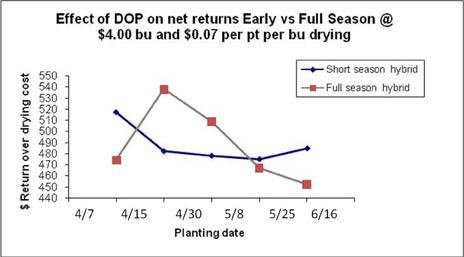When to switch to a short season hybrid
Editor’s note: This article is from the archives of the MSU Crop Advisory Team Alerts. Check the label of any pesticide referenced to ensure your use is included.
The
extreme wet weather this planting season has delayed corn planting
relative to past years across much of the state. As discussed in an
earlier message, it is important to exercise patience when deciding when
to restart field operations following periods of rain. Jumping the gun
and compacting soils has the potential to be more detrimental to crop
yield and profits compared to delaying planting a few more days.
Research has shown that under average Michigan conditions, it generally
pays to switch to a short season hybrid in late May. The basis for the
cost effectiveness of switching to a short season hybrid is primarily in
the ability to harvest dryer grain in the fall. The optimum time to
pull the trigger on the switch to a short season hybrid will vary from
year-to-year depending on weather conditions, but it is generally around
the third to fourth week of May for much of Michigan.



 Print
Print Email
Email





